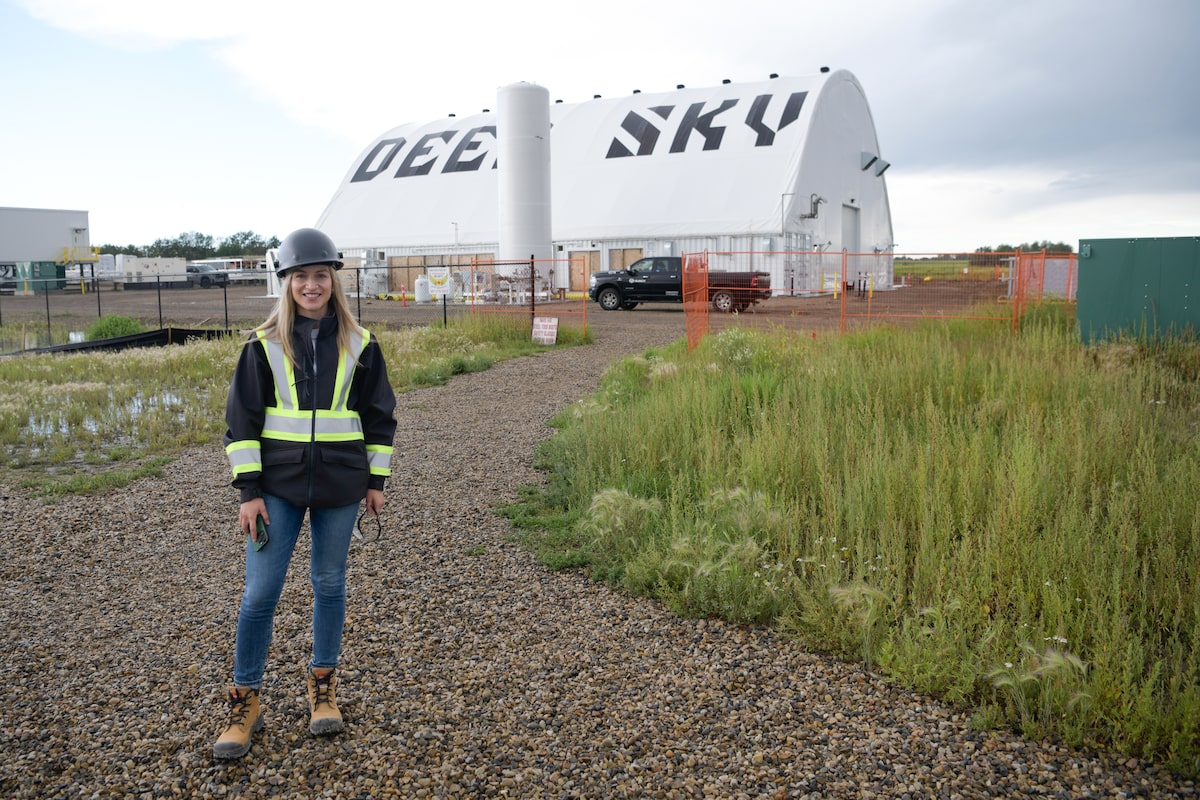Deep Sky CEO Alex Petre at the company’s Innisfail, Alta., direct-air-capture facility, where it is testing technology deployed by several vendors to examine overall efficiency and scalability as they remove climate-warming gas from the air.Sarah B Groot/The Globe and Mail
Carbon-removal startup Deep Sky Corp. plans to build a $500-million direct-air-capture plant in southwestern Manitoba, one of the world’s largest facilities designed to counteract the buildup of CO2 in the atmosphere.
Montreal-based Deep Sky said Thursday that it is developing a project that will absorb 500,000 tonnes of carbon dioxide annually, dwarfing its newly operational demonstration plant in central Alberta.
It is announcing the venture as Canada becomes a focus for decarbonization with U.S. President Donald Trump’s administration canceling billions of dollars in incentives for green technology.
Deep Sky will start with a $200-million phase that will remove 30,000 tonnes of CO2 per year for injection underground in the region. Construction will start in 2026, the company said. It will add the rest of the facilities in stages.
The company is in talks with municipal and Indigenous leaders, as well as other stakeholders, to determine where it will locate the plant. It is focusing on the Pipestone and Two Borders areas southwest of Brandon, Man.
“We’ve looked at a number of sites in that area and what is really going to drive our decision is the geology underneath all of those sites that we’re considering, as well as securing the power,” Alex Petre, the company’s chief executive officer, said in an interview.
Canada could lead in CO2 removal if Ottawa supports market, coalition says
Deep Sky expects to finalize the site this autumn so it can drill a CO2 storage well by the end of this year, it said.
Ms. Petre said Manitoba offers several advantages, including geology suited to gas injection, carbon-free hydro power, a trained work force and a favourable regulatory regime. The provincial government passed legislation in 2024 allowing for CO2 storage.
Deep Sky, started two years ago by Fred Lalonde, founder of the online travel agency Hopper Inc., plans to line up its own financing for the project, and it has been marketing credits for the offtake. There is interest among prospective buyers for offsets, Ms. Petre said.
“There is a lot of space in the market for any project developer or company that actually takes execution seriously and is able to deliver credits quickly. So, with Alpha, we’ve demonstrated that we are very serious about execution,” she said.
This summer, Deep Sky started up its Alpha facility in Innisfail, Alta., where it is testing technology deployed by several vendors to examine energy use, overall efficiency, durability and scalability as they remove climate-warming gas from the air. When fully operational, the plant will remove 3,000 tonnes of carbon dioxide per year.
Ms. Petre declined to divulge which vendor will supply the gear for the Manitoba project, only that Deep Sky is “working with some exciting front-runners” on next-generation carbon-removal technology.
A rendering of the Manitoba direct-air-capture plant, which will start construction next year.Supplied
The company said it has garnered the support of the Dakota Grand Council by working with the Dakota Nations of Manitoba, and it has signed a declaration to explore investment and partnership opportunities.
Ms. Petre said the council is enthusiastic about the investment in the region and prospect of future power generation to support later phases. “They are definitely looking forward to discuss all possible avenues, but equity investments from their side have been on the table as well,” she said.
Council chairman Raymond Brown, Chief of the Canupawakpa Dakota Nation, said in a statement that Deep Sky’s project aligns with the Dakota economic development strategy and its vision of a sustainable future.
As Deep Sky unveils its investment, the U.S. government has announced it is cancelling billions of dollars in funding for clean energy programs and is considering more cuts. Projects on the list include two major direct air capture hubs that received billion-dollar awards from former president Joe Biden’s administration.
Ms. Petre said the development is bad news for the U.S. industry, but it puts the spotlight on Canadian carbon-removal opportunities.
“I would say we had already been working with a number of U.S.-based companies that saw the writing on the wall and now we definitely have an influx,” she said. “I have gotten a lot of fairly panicked calls from a lot of my peer group in the U.S.”
One of those companies, CarbonCapture Inc., had been developing a project in Arizona, but moved its equipment to Deep Sky’s Alpha project.
“They basically had everything ready to go in Arizona and within four weeks they shipped everything across the border, and because we already had all of the infrastructure, they are basically able to plug and play.”

